|
Well calibrated CCD image of M31 galaxy is dominated by the
combined light of stars belonging to M31. Although almost 3 millions
light years away, giant ellipse of galaxy core and spiral arms shine
much more than faint stars belonging to our galaxy. The same is true
for possible M31 novae.
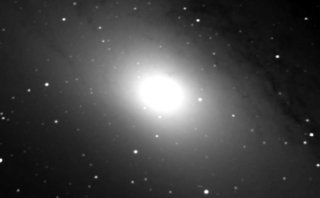
Image of M31 galaxy, taken with 35 cm (14 inch)
f/4.7 Newtonian telescope. Can you spot any
“new” star? M31 acts as unwanted background gradient here. It affects star
visibility as well as precision of photometric measurements. But this
“gradient” cannot be removed by ordinary gradient-removal
filters. It is impossible to model it analytically with acceptable
precision. The best way of dealing with M31 background light is the
median filter.
Every pixel in image is replaced by the middle value of sorted
values of surrounding pixels. The radius determining the area, which
pixels are sorted, defines the size of details eliminated by the
filter. If no star image exceeds the defined radius, the result of
this filter is image without stars at all.
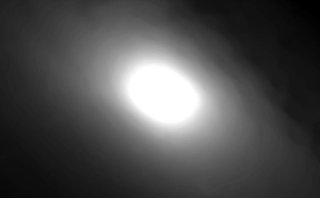
Image of M31 after applying of the median filter—all stars were wiped off. Then the median-filtered image can be subtracted from the original
one. The result is image without galaxy background. The artifact in
the center is the galaxy core, whose size is smaller than the median
filter radius, so the filter does not eliminate it.
M31 galaxy image after removing the median (left). Two
novae (No. 24 and 25), discovered by Kamil Hornoch, are clearly
visible here (right). SIMS combines the median filter and its subtraction to the one
“subtract-median” filter to speed up the whole process. The
median filter in SIMS is “rigorous”—it
is not only approximated. Although calculating median is relatively
time-consuming, the filter is fast enough even to process e.g.
32 megapixel images from really large
telescopes.
Images from Isaac Newton Telescope (INT)
The field of nova No. 35 was also imaged by D. Mackey using
2.54 m INT
telescope, located on Roque de Los Muchachos Observatory, La
Palma, Spain.
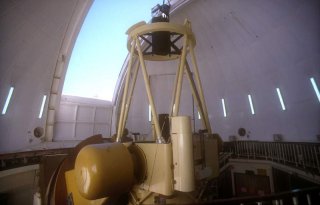
2.54 m
Isaac Newton Telescope (INT) The telescope is equipped with advanced, wide field CCD camera
comprising of 4 CCD chips, 2K × 4K pixels each, plus another service CCD
for guiding. The resulting image has 32 megapixels.
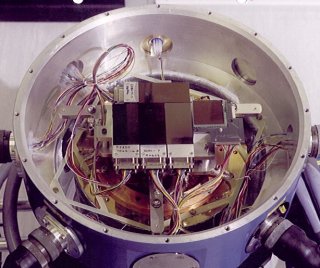
32 megapixel camera used
on the INT Images from the INT are stored as multi-part FITS files. The
master header is followed by 4 sections, each containing one
8 megapixels image. SIMS allows
splitting of this file into four separate FITS files and
subsequent calibration and processing.
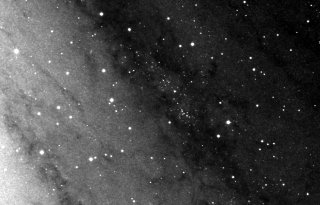
The portion of original M31 image from INT 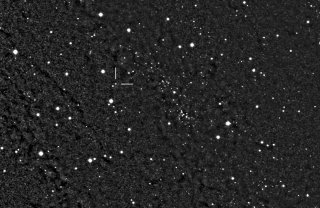
The above image with subtracted median and marked nova
No. 35 Images from VATT (Vatican Advanced Technology
Telescope)
P. Garnavich and J. Gallagher imaged nova No. 38 using VATT at
Vatican observatory at Mt. Graham, USA. The telescope has
1.83 m primary
mirror.
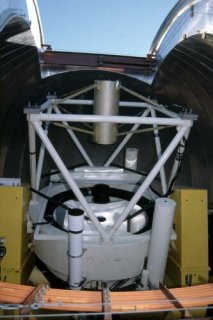
1.83 m
Vatican Advanced Technology Telescope Images processed in SIMS demonstrates very good optics as well
as very good seeing, typical for this observatory.
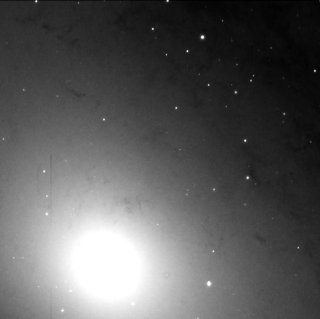
Part of M31 image created at VATT. 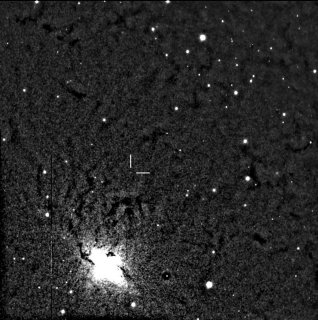
Part of M31 image created at VATT. Dark vertical lines visible on these images are artifacts
caused by camera electronics or CCD chip itself.
Images from INT: D. Mackey
Images from VATT: P. Garnavich and J. Gallagher
Other images of M31, image calibration and processing: Kamil
Hornoch, http://astro.sci.muni.cz/lelek/
| 